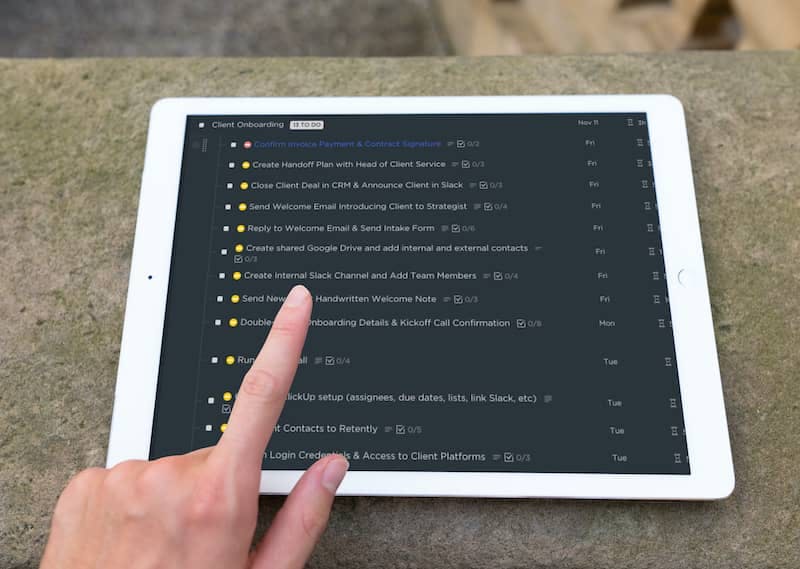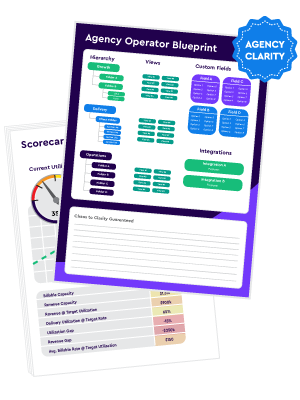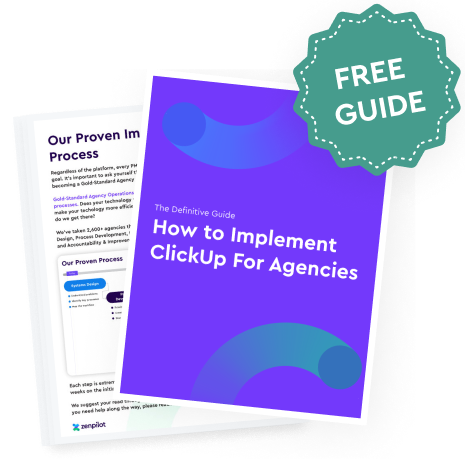Building a Process Documentation Framework Step-By-Step
Now let's explore how to build a process documentation framework for your team step-by-step.
Step 1) Conduct workflow interviews
Gather team members together in groups or 1-on-1 to map existing processes.
Ask guided questions like "Walk me through what happens when you publish a blog post from start to finish".
Take diligent notes to begin compiling steps for documentation.
Step 2) Review existing documentation
Many team members likely have process documentation already created for their roles and workflows.
Gather these documents to serve as a starting point for your framework.
Step 3) Record workflows with screen capture tools
Use tools like Tango and Scribe to instantly capture team members' screens as they walk through workflows.
This requires almost no manual documentation work.
Step 4) Organize and centralize documents
Select a centralized platform like Guru or Confluence to house documentation.
This gives everyone a single source of truth for quick access to the latest processes.
Step 5) Create documentation templates
Design standardized templates for process documents moving forward.
We recommend ClickUp or Teamwork.com for this. (Click either tool to go to our in-depth guide on how to structure your whole agency in it.)
This ensures consistency across future documentation.
Recommended sections:
- Overview
- Required Materials/Systems
- Step-by-Step Instructions
- Images/Screenshots
- Key Contacts
- Related Documents
Step 6) Map documentation to workflows
Organize documentation based on team workflows vs. by person or job function. This facilitates finding the right docs during execution.
For example, “Website Redesign” instead of “John’s responsibilities”
Step 7) Set reminders for document review
In tools like Guru, set quarterly or biannual reminders to review and refresh each document.
This ensures docs stay up-to-date as processes evolve.
Step 8) Prioritize documentation for top workflows
Identify the 5-10 most frequent and important workflows and focus initial documentation efforts here.
Common examples: client onboarding (steal our client onboarding process and template here), project launches, reporting.
Related: Stop Leaking Money: Gain Clear Visibility Into Utilization and Profitability Using ClickUp Data
Step 9) Add screenshots and visuals
Insert screenshots to illustrate complex steps like navigating software menus and dashboards.
Visuals simplify comprehension and recall.
Step 10) Include process-related checklists
Checklists within documentation provide helpful task reminders as users complete workflows.
For example, a client onboarding checklist may include:
- Send welcome packet
- Schedule kickoff call
- Create project folder
- Send NDA
- Send questionnaire
Related: Agency Client Onboarding: The Exact Process To Follow [+Free ClickUp Template]
Step 11) Insert links to related documents
Link out to related process docs, SOPs, templates and training materials for quick access when completing workflows.
Related: How to 10x Productivity With ClickUp Templates
Step 12) Highlight key contacts
Note key team members involved in each process with their responsibilities and contact info.
This facilitates quickly identifying whom to contact with questions.
Step 13) Outline dependencies
Note predecessor steps each task depends on for clarity of sequencing and dependencies.
For example:
- Task A
- Task B (dependent on task A)
- Task C (dependent on task B)
This prevents broken workflows when steps are completed out of order.
Step 14) Continuously iterate
Treat process documentation as living documents.
Note any ways to improve as you execute workflows. Update docs in real-time.
Now you have a comprehensive process documentation framework!
Client Onboarding ClickUp Template
Access our pre-built Client Onboarding ClickUp template, 100% free.

Elements to Include in Process Documentation
Beyond overall frameworks, optimal process documentation also includes:
- Due Dates - When tasks must be completed
- Time Estimates - How long tasks take (for capacity planning)
- Task Types - Actionable, meetings, non-actionable, etc.
- Dependencies - Sequencing rules
- SOPs - Step-by-step standard operating procedures
- Checklists - Reminders and requirements for users as they complete tasks
- Visuals - Screenshots, photos, illustrations
- Templates - Attach related templates and examples
Related: How to 10x Productivity With ClickUp Templates
With each process fully documented including these elements, teams have all the information needed to successfully execute workflows.
Maintaining and Updating Documentation
Documentation frameworks provide the foundation, but maintenance brings documentation to life.
Be diligent about reviewing and updating documentation regularly. Treat it as a living body of knowledge.
Without constant care, documentation quickly becomes obsolete. Don't document once and forget!
Allocate time for reviewers to refresh documentation quarterly, biannually or as processes change.
In tools like Guru, set reminders to prompt these reviews on schedule.
Empower all team members to suggest documentation improvements in real-time. Maintain documentation vigilantly!
Turn Chaos Into Clarity.
We're your agency operations pilot.
You can build a happier, more productive, more profitable team with ClickUp. We'll show you how.
What's Needed Beyond Process Documentation?
While robust process documentation is invaluable, it’s not all you need to run a tight ship at your business.
For starters, teams must zealously follow and improve upon documented processes. And that's just one of the potential long-term issues you might run into.
That’s why at ZenPilot we believe fixing chaotic project management for good requires you to nail the 3 Keys:
- Processes
- Tools
- Habits
Luckily, we help you figure out all three through our proven process.
As a result, agencies enjoy higher profits and happier teams that have eliminated wasteful activities in favor of high-impact work that moves the needle and delights clients.
Related: Beam Content Increases Annual Contract Value by 42% with ZenPilot and ClickUp
Conclusion
There you have it - a comprehensive, step-by-step guide to building and managing a process documentation framework for your team.
While it requires an upfront time investment, the long-term benefits can be transformational. Work becomes scalable, bottlenecks disappear, and team members work seamlessly together.
Now it's time to get documenting and transform your team's operations! Feel free to reach out with any questions:








